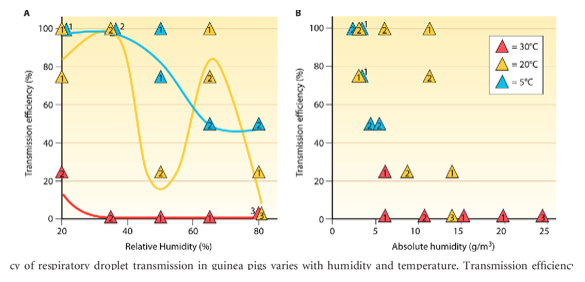News & Media

Controlling The Spread Without a Lock Down
Like the ocean finds the shore, the virus continues to find its way to human hosts world-wide. It ignores borders, lockdowns, aspirin as well as bush-tea. Statistics put the following into perspective: the virus thrives in countries such as the USA, where society, politics and scientists are divided. In Asian countries that have a history of outbreaks, the virus is much better contained.
For the evolution of the virus, it all doesn’t really matter. It has been with us for millions of years, for as long as life on earth existed. Unlike bacteria, viruses aren’t living organisms; they can’t reproduce on their own. Instead, they hijack cells to multiply, spread and cause disease.
The key to containing the virus is to prevent it from spreading to new hosts. Japan for example has been very successful in controlling the outbreak and has found a formula without lockdowns. The Japanese government ‘requested’ the public not to go out, if not necessary, and for bars and restaurants to suspend their business temporarily. The request to adhere to practices that minimize the risk slowed down the spread and helped to reduce it. The other important factor was the national awareness and strict avoidance of the so called 3 C’s, namely: Closed spaces with poor ventilation; Crowded spaces open to the public and; Close contact which puts people in range of flying droplets from speaking, coughing and sneezing. Even when the 6-feet social distancing rule cannot be maintained, the proper use of facemasks will minimize the risk of infection and prevent an outbreak. The government went even so far as not to make testing widely available for those who were not prone to falling seriously ill. Japan learned from previous outbreaks that when patients flocked to doctors and hospital lobbies to get tested, where the 3 C’s could not be maintained, other patients and many healthcare workers got infected, which compromised the entire healthcare system.
When someone still gets infected, the 3 C’s and facemasks provide another benefit. The so-called viral dose (the amount of virus someone breaths in) is far less, which seems to impact the way in which people become infected as well as the severity of the infection. The more intense the viral dose, the severer the illness becomes. Perhaps this explains why there are asymptomatic patients in contrast with severe cases leading to death.
With reference to the 3 C’s and the outbreaks in Sint Maarten, it is evident where the virus found its way to its hosts. This transpired at events of mass gatherings, and the most recent event at the nightclubs, all with large crowds in close proximity and without masks.
It all sounds so simple, we enforce a one-island policy based upon the 3 C’s, prohibit crowds in closed environments, limit public gatherings to a maximum of 20 people, order mandatory facemasks in public spaces and protect the elderly and the vulnerable. Actually it is that simple if the one-island rules are implemented and acknowledged. If we, one and all, change our behavior by adhering to the rules, it will be possible to live without a lockdown and without having to close our borders. In that light, we will be able to start with the recovery of our economy. Rather than focusing on elimination of the risk of infection, the objective should be to stop the spread of the disease and keep the number of patients to a minimum. Lock-down strategies are not sustainable and repeated implementation is affecting our society and economy to the core, causing an outcome that is worse by far.
On the positive end, the environment on Sint Maarten is conducive to minimizing the spread of the virus. Yes, we really might be living in one of the best places on earth because of our geographical location. Sint Maarten’s constantly stable temperature and steady humidity are the virus’s worst enemies.
Experimental studies on guinea pigs demonstrated that the transmission of influenza viruses is strongly modulated by temperature and humidity. A number of epidemiological studies have followed up on these findings and revealed robust associations between the occurrence of influenza in temperate regions and local conditions of humidity and temperature, and they offer a long-awaited explanation for the wintertime seasonality of influenza in these locales. Despite recent progress, important questions remain as to the mechanism(s) by which humidity and/or temperature affects transmission

FIG 1 The efficiency of respiratory droplet transmission in guinea pigs varies with humidity and temperature. Transmission efficiency, calculated as the percentage of exposed guinea pigs that contracted infection, is plotted against relative humidity (A) and absolute humidity (B). In each case, data points obtained at 5°C are blue, those obtained at 20°C are yellow, and those obtained at 30°C are red. Numbers within or adjacent to the symbols indicate the number of replicate experiments represented. Trend lines shown in panel A were drawn freehand. Data are reported in references 5, 6, and 8, with the exception of the results of the experiment at 5°C and 20% RH, which is unpublished. The data shown include results obtained with both the A/Panama/2007/1999 (H3N2) and A/Netherlands/ 602/2009 (H1N1) viruses. (Published in Journal of Virology 2014 - Roles of Humidity and Temperature in Shaping Influenza Seasonality. Anice C. Lowen, John Steel)
Sint Maarten’s constantly stable temperature averaging 27 degrees and a humidity averaging 77% are the virus’s worst enemies.
Similar to Japan, and other Asian countries, if everyone does their part in strict and consistent adherence to the 3 C’s, and disciplined and proper use of facemasks in public and when around others, together we will be able to mitigate the spread of the virus and achieve a satisfactory level of control and containment before more drastic measures become necessary.
 84°F / 29°C
84°F / 29°C

